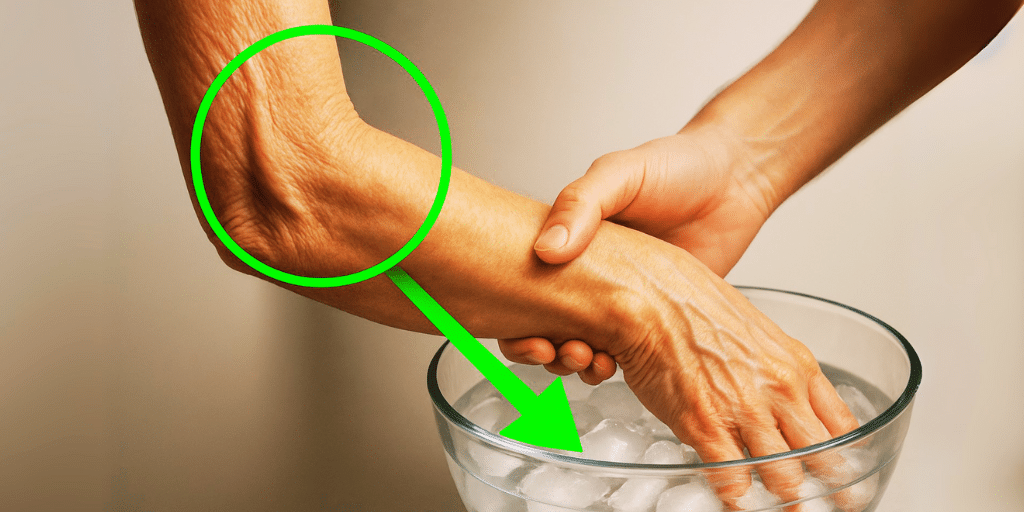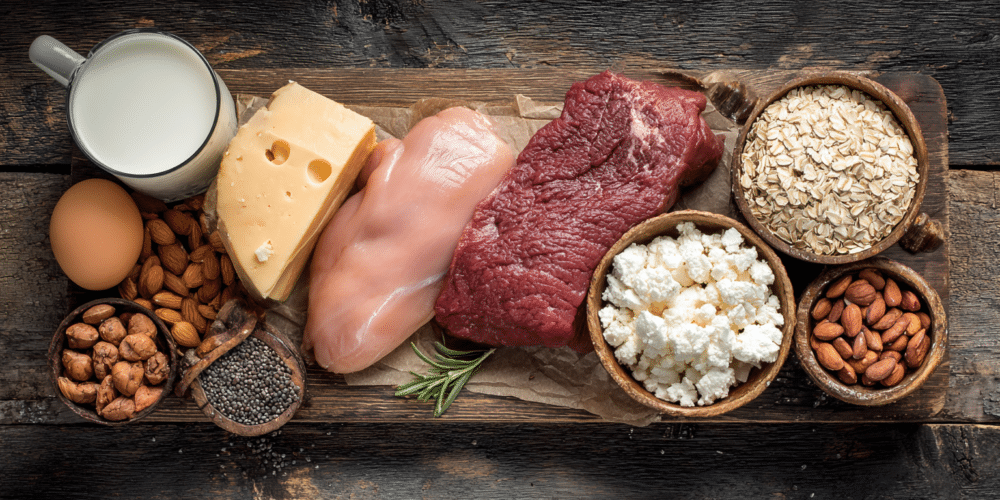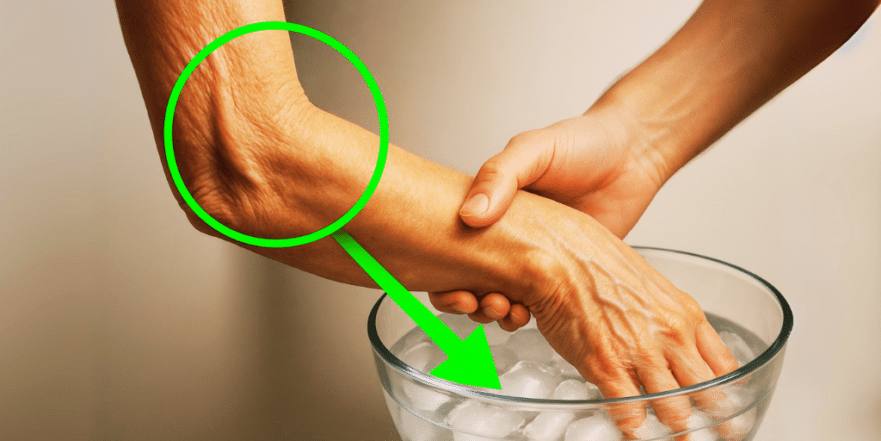
Losing muscle strength as you get older isn’t a given. Many older folks keep their muscles strong and stay surprisingly agile. With new information, we can turn around muscle loss using simple, easy changes you can start today. This article will show you how to do just that, focusing on 10 practical steps and common sense. (Based on the research of Dr. Iñigo Martín)
💡10. The Truth About Muscle Loss and Aging

It’s easy to think that losing muscle and strength is just part of getting older. We see it all the time: people struggling to get out of a chair, losing their balance easily. This isn’t just about how you look; losing muscle can really mess with your independence, make falls more likely, and even mean you need help with everyday stuff. But here’s the thing: it doesn’t have to be this way. There are 80-year-olds out there who are incredibly strong, agile, and living active lives. What’s their secret? It’s not just good genes. A lot of what we used to think about aging and muscles is just plain old news. We know so much more now, and there are ways to slow down, and even reverse, muscle loss. And the best part? It’s not rocket science. These are changes you can start making today.
There’s a common mistake many people make every day that speeds up muscle loss without them even realizing it. We’re going to look at how to avoid that and how to build a strong body so you can really enjoy your later years.
✨9. Vitamin D: Your Muscles’ Best Friend

One of the biggest things for your muscles is Vitamin D. Most older people have low levels, and that’s a big problem. Vitamin D isn’t just for your bones; it’s super important for your muscles to work right.
Think about Carmen, a 72-year-old who was always active but started feeling weaker. Climbing stairs became a chore, and she tired out faster. Her doctor just told her it was “age.” But Carmen wasn’t having it. She looked into it and found out how important Vitamin D is for muscles. She got her levels checked, and they were super low. So, she started taking a Vitamin D supplement, adjusting the dose based on her tests, and spent a few minutes in the morning sun each day. Three months later, Carmen felt a huge difference. More energy, stairs were easier. Her doctor was surprised at her next check-up, and Carmen just smiled. She knew it wasn’t just “age.”
Your muscle cells have special “doors” called receptors for Vitamin D. When Vitamin D gets in, it kicks off signals that tell your muscles: “Stay strong, fix any damage, grow a little more.” If you don’t have enough Vitamin D, these signals don’t get through, and your muscles slowly get weaker. People with good Vitamin D levels are stronger and move better.
But getting those levels up isn’t always easy as you get older. Your skin makes less Vitamin D from the sun, and food usually doesn’t give you enough. A common myth is that taking 600 or 800 international units a day is enough, which is what’s often suggested. But for many older people, that’s not nearly enough. They might need higher doses, like 2,000 or even 4,000 a day. The only way to know for sure how much you need is with a blood test. That way, you can adjust your dose to hit the right levels.
Vitamin D also needs some helpers. Magnesium helps activate Vitamin D, and Vitamin K2 makes sure calcium goes to your bones and not your arteries. Without these helpers, Vitamin D doesn’t work as well and can even cause problems, like calcium building up where it shouldn’t. So, if you’re taking Vitamin D, make sure you’re getting enough magnesium and K2. You can find them in leafy greens, nuts, seeds, and fermented foods like sauerkraut. Vitamin D is a cornerstone for your muscles, telling them to stay strong. It’s a key nutrient you can’t ignore.
⚙️8. Protein: The Building Blocks of Muscle

Another super important thing is protein. Think of your muscles like buildings made of bricks. Those bricks are amino acids, and amino acids come from the protein you eat. If you don’t eat enough protein, your muscles don’t have the stuff they need to fix themselves or stay strong. They just get weaker.
Your body is smart, though. It keeps a reserve of amino acids floating around in your blood, and this reserve lasts about 24 hours. What does that mean? It means you have some flexibility with when you eat. So, let’s bust another myth: the idea that you need to eat protein at very specific times, like right after a workout, or spread it out perfectly over five meals. The main thing is that by the end of the day, you’ve eaten enough protein overall. And getting that daily amount is super important, especially after 60.
As you get older, your body has a harder time hearing the protein signal to build muscle. This is called “anabolic resistance.” That’s why older people often need more protein than younger people to get the same effect. How much protein do you need? General recommendations sometimes fall short for older adults. Many experts suggest between 1 and 1.2 grams of protein for every kilogram of your body weight per day. So, if you weigh 70 kg, that’s about 70 to 80 grams of protein daily. It sounds like a lot, but you can get there by focusing on good quality protein sources in your meals.
Legumes like lentils, chickpeas, and beans are great options; they’re packed with protein and fiber. Tofu and tempeh, made from soy, are also really good sources. Nuts and seeds give you protein and healthy fats, like almonds, walnuts, chia seeds, and hemp seeds.
How do you hit your daily goal? You could start your day with a plant-based protein shake or add scrambled tofu to your toast. For lunch, a big salad with chickpeas or lentils. And for dinner, a legume stew or stir-fried tempeh with veggies. A good trick is to think in portions. A serving of cooked legumes, like a deep bowl, gives you about 20 grams of protein. A block of firm tofu can have up to 40 grams, and a handful of almonds gives you about 6 grams. You can add up the amounts throughout the day.
So, we’ve talked about what helps your muscles: Vitamin D and enough protein. But now, let’s talk about an enemy, one that hides, seems harmless, and even healthy, but sabotages your efforts to stay strong.
🚫7. The Hidden Enemy: Processed Foods

Who am I talking about? Those products that fill supermarket shelves, advertised as “natural,” “light,” “fitness,” or “enriched,” but hide ingredients that harm your muscles. Think about sugary drinks, even “natural” ones like packaged fruit juices or plant-based drinks with added sugars. They seem healthy, but that sugar hits your bloodstream super fast, causing a spike in insulin and then a sharp drop. These hormonal ups and downs aren’t good for your muscles; they create an environment that encourages inflammation.
Another example: “light” or “fitness” processed products. Energy bars, fat-free yogurts with sweeteners, whole-grain cookies. They often remove fat but add hidden sugars, refined flours, or weird additives that can inflame your body. And enriched breakfast cereals? They sound good, but they’re usually sugar bombs and refined flours. Even if they add some vitamins, the sugar damage is bigger. Eating them every morning is like starting your day by putting obstacles in front of your muscles.
What’s the real problem here? These products cause inflammation, a low-grade, chronic inflammation that you don’t notice at first, but it’s there. And this inflammation speeds up muscle breakdown and blocks the signals that tell your muscles to grow or repair. It’s like trying to build a house while a small fire is burning it from the inside.
The solution: go back to basics, to real, minimally processed food. Read labels, be wary of products with long lists of ingredients with strange names. Prioritize whole fruits and vegetables, legumes, real whole grains, nuts, and seeds. Swap juice for whole fruit, or sugary cereal for whole oats with nuts. These small changes have been shown to give big results.
🚀6. Strength Training: The Ultimate Muscle Builder

Now, let’s talk about the most powerful thing for your muscles, the habit that makes the biggest difference against the effects of time: strength training with weights, resistance bands, or even just your own body weight. But not just any exercise will do. Walking is good, swimming is good, but to fight muscle loss, you need something more. You need to challenge your muscles, push them close to their limit safely and gradually.
Here’s the key that many people miss: intensity is more important than duration. It’s not about doing lots of reps with little effort. It’s about those last few reps being tough, where you really feel your muscle working. That intense effort is the signal your body needs, the signal that says, “I need to get stronger.”
Think about it: if you always lift the same easy weight or do the same number of reps without effort, your body gets used to it. It thinks, “I’m strong enough for this,” and stops adapting, stops building muscle. That’s why you need to increase the challenge little by little. This is called progressive overload.
How do you do it? You can lift more weight, or do the movement slower and more controlled, especially on the way down. That “eccentric” phase, when the muscle lengthens under tension, is the most powerful for stimulating growth. Also, it’s better to focus on exercises that work several muscles at once: squats, push-ups (adapted to your level, like against a wall or on your knees), rows with resistance bands. These movements are more efficient, giving you more bang for your buck in less time.
And the best part? It’s never too late to start. There are studies with people in their 80s and 90s who started strength training and saw amazing improvements. They gained strength and muscle. Think of Manuel. He’s 82 and has lost a lot of strength; it’s hard for him to get out of bed. So, his son encourages him to try strength exercises. He starts very gently: squats holding onto a chair, lifting water bottles, twice a week, 15 minutes. At first, he doubts it, but he keeps going. Six months later, Manuel can get up by himself, walk more confidently, and doesn’t need help getting around. The good news is you don’t need to go to a gym. You can start at home with simple exercises using your body weight or cheap resistance bands. The important thing is to start, be consistent, and increase the challenge little by little.

